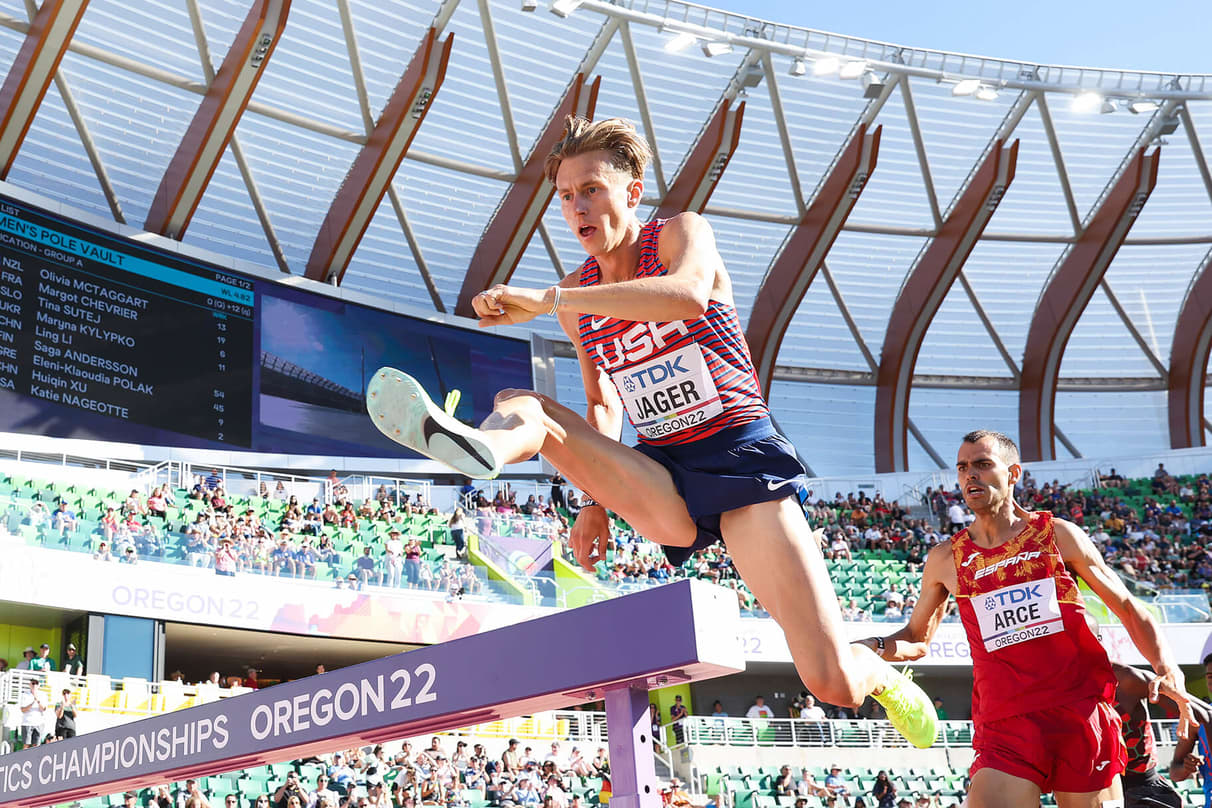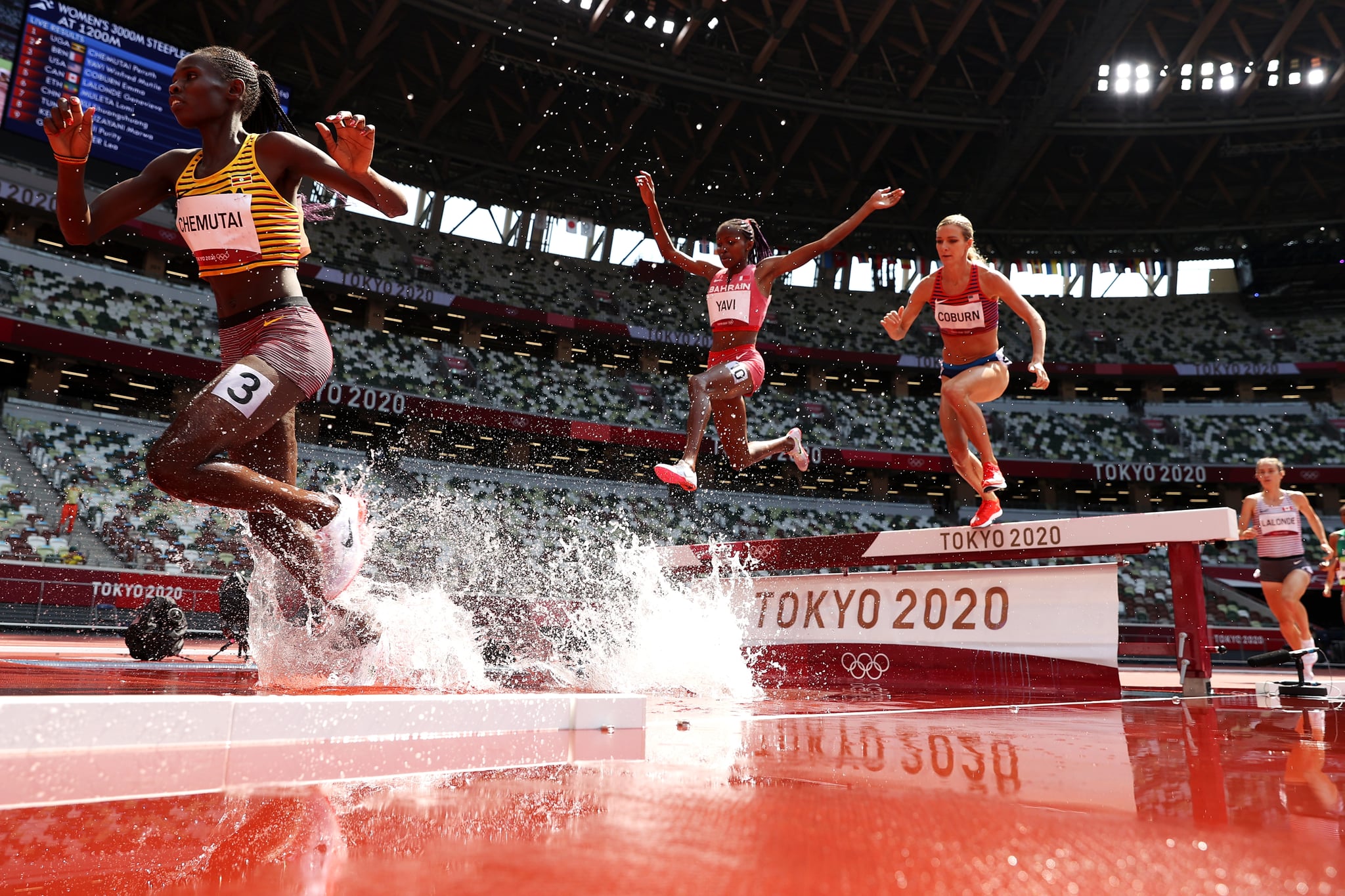History and Evolution of Steeplechase in the Olympics

The steeplechase, a thrilling and challenging race that combines speed, endurance, and agility, has been a staple of the Olympic Games since 1900. Its origins can be traced back to the 19th century, evolving from a unique obstacle race that tested the mettle of both horses and riders.
Origins and Inclusion in the Olympics
The steeplechase originated in England during the 19th century, inspired by cross-country horse racing. The name “steeplechase” itself is derived from the fact that the races often involved jumping over obstacles, including church steeples, hence the name.
The first official steeplechase race was held in 1830, and the event quickly gained popularity in both England and Ireland. The first Olympic steeplechase was held at the 1900 Summer Olympics in Paris, where the distance was set at 2,500 meters with 28 obstacles. The race was won by George Orton of Canada, who also won the 2,500 meter race at the same Olympics.
Significant Moments in Steeplechase History
- 1900: The first Olympic steeplechase is held in Paris, with a distance of 2,500 meters and 28 obstacles. Canadian athlete George Orton wins the event.
- 1904: The steeplechase distance is increased to 3,200 meters at the St. Louis Olympics. The race was won by American athlete James Lightbody.
- 1920: The distance is shortened to 3,000 meters at the Antwerp Olympics. This distance remains the standard for the Olympic steeplechase to this day.
- 1964: The legendary Kenyan runner Kipchoge Keino wins the steeplechase at the Tokyo Olympics, setting a new Olympic record of 8:29.4.
- 1984: The legendary Ethiopian runner Saïd Aouita sets a new world record of 7:55.72 at the Los Angeles Olympics.
- 2008: The legendary Kenyan runner Ezekiel Kemboi wins the steeplechase at the Beijing Olympics, becoming the first athlete to win the event at three consecutive Olympics.
Changes in Rules and Regulations
The rules and regulations governing the steeplechase have evolved over time, impacting the race’s strategy and execution.
- Obstacle Height and Spacing: The height and spacing of the obstacles have been adjusted over time to ensure a challenging but safe race. Initially, obstacles were higher and more widely spaced, but they have been lowered and brought closer together in recent years to encourage a more dynamic and aggressive racing style.
- Water Jump: The water jump is a signature element of the steeplechase, requiring athletes to clear a water barrier. The size and depth of the water jump have been adjusted over time to ensure a challenging and safe obstacle. Athletes must jump over the water barrier and land on the other side with minimal splash.
- Foot Placement: The rules regarding foot placement on the obstacles have also changed. Initially, athletes were allowed to use any part of their body to clear the obstacles. However, current rules require athletes to use only their feet to clear the obstacles, adding an extra layer of complexity and skill to the race.
Technical Aspects of Steeplechase: Steeplechase Olympics

Steeplechase, a demanding and captivating track and field event, combines the endurance of long-distance running with the technical prowess of hurdle clearance and the added challenge of water jumps. This unique blend of skills requires athletes to possess a diverse set of abilities and strategies.
Water Jumps
Water jumps, a defining feature of steeplechase, present a unique challenge that demands specialized techniques. Athletes must maintain momentum while approaching the water, making a controlled leap over the barrier and landing smoothly in the water. The water jump requires a delicate balance of speed, agility, and precision.
- Approach and Take-Off: Steeplechasers typically approach the water jump at a high speed, maintaining a consistent stride pattern. They then take off with a powerful push from their dominant leg, propelling themselves over the barrier.
- Clearance and Landing: The key to a successful water jump lies in clearing the barrier with enough height to avoid contact with the top of the hurdle. Athletes aim to land softly in the water, minimizing the impact and reducing the risk of injury.
- Water Entry and Exit: Upon landing, steeplechasers strive to maintain their momentum and minimize the time spent in the water. They use a streamlined entry and exit technique, minimizing resistance and maximizing efficiency.
Hurdle Clearance
Hurdle clearance in steeplechase is a crucial element, requiring athletes to maintain speed while negotiating the barriers effectively. Steeplechase hurdles are higher than those in other track events, demanding a more powerful and coordinated approach.
- Hurdle Technique: Steeplechasers typically use a lead leg technique, leading with their dominant leg to clear the hurdle. They strive for a smooth, flowing motion, minimizing disruption to their stride and maintaining momentum.
- Hurdle Rhythm: Maintaining a consistent rhythm and stride pattern is essential for efficient hurdle clearance. Athletes must coordinate their movements to ensure they clear each hurdle with the correct timing and technique.
- Hurdle Height and Spacing: Steeplechase hurdles are 36 inches (91.4 cm) high, which is higher than standard hurdles in other events. The spacing between hurdles is also greater, demanding a more powerful and extended stride.
Training Methods and Strategies
Training for steeplechase requires a comprehensive approach that addresses the unique demands of the event. Elite steeplechasers typically incorporate a variety of training methods and strategies to develop the necessary skills and endurance.
- Endurance Training: Long-distance running is a fundamental aspect of steeplechase training, building the aerobic base required for the event. Athletes engage in extensive runs, tempo runs, and interval training to enhance their endurance and stamina.
- Strength and Conditioning: Strength training is crucial for developing the power and explosiveness needed for hurdle clearance and water jumps. Athletes focus on exercises that strengthen their legs, core, and upper body.
- Water Jump Practice: Dedicated practice sessions are essential for mastering the technique of water jumps. Athletes work on their approach, take-off, landing, and water entry and exit techniques.
- Hurdle Training: Hurdle drills and practice sessions are vital for developing efficient and consistent hurdle clearance. Athletes focus on maintaining speed, rhythm, and proper technique.
Equipment and Apparel, Steeplechase olympics
Steeplechase athletes rely on specialized equipment and apparel to enhance their performance and comfort.
| Equipment/Apparel | Impact on Performance |
|---|---|
| Running Shoes | Lightweight, cushioned shoes provide support and comfort, maximizing efficiency and reducing injury risk. |
| Running Shorts and Singlet | Lightweight, breathable clothing allows for optimal movement and ventilation, reducing heat buildup and discomfort. |
| Water Jump Barriers | Durable, lightweight barriers provide a safe and consistent platform for athletes to clear. |
| Water Jump Pool | Adequate water depth ensures safe landings and minimizes impact. |
Notable Steeplechase Athletes and Performances

The steeplechase has been a thrilling event in the Olympic Games since its introduction in 1900, witnessing the rise of legendary athletes who have pushed the boundaries of human endurance and left an indelible mark on the sport. This section explores the remarkable journeys of these individuals and the evolution of records that highlight the relentless pursuit of excellence in this demanding discipline.
Notable Steeplechase Athletes
The steeplechase has seen the emergence of extraordinary athletes who have dominated the event and inspired generations of runners. Their accomplishments have not only etched their names in Olympic history but have also elevated the sport to new heights.
- Kenia’s dominance: Kenyan athletes have consistently dominated the steeplechase in recent years, with a remarkable lineage of world-class runners who have captured multiple Olympic medals. Notable figures include Ezekiel Kemboi, a four-time world champion and two-time Olympic gold medalist known for his signature “Kemboi kick” that secured victory in dramatic fashion. Conley Tuwei, a two-time Olympic gold medalist, has showcased exceptional tactical prowess and speed, establishing himself as a force to be reckoned with. Julius Kogo, another Kenyan star, secured the 2016 Olympic bronze medal and has consistently challenged for top honors in major competitions. The dominance of Kenyan athletes is attributed to their natural talent, rigorous training regimes, and a strong culture of running that fosters excellence.
- Saïd Aouita’s record-breaking legacy: Saïd Aouita, a Moroccan middle-distance runner, holds the world record in the steeplechase, a feat he achieved in 1987. Aouita’s exceptional speed and endurance allowed him to break the existing record by a significant margin, a testament to his extraordinary athleticism. His record, which stands to this day, is a symbol of the human spirit’s capacity to overcome challenges and achieve greatness.
- The enduring legacy of Vladimir Kazantsev: Vladimir Kazantsev, a Soviet steeplechaser, won gold at the 1980 Moscow Olympics and was known for his tactical brilliance and powerful finishing kick. Kazantsev’s victory, which came in the midst of the Cold War, showcased the resilience and determination of athletes in challenging circumstances. His success was a testament to the universality of sport and its ability to transcend political boundaries.
Evolution of Steeplechase Records
The pursuit of excellence in the steeplechase has led to a steady evolution of records, reflecting advancements in training techniques, technology, and the unwavering dedication of athletes.
- Early Records: The first Olympic steeplechase record was set in 1900 by George Orton, a Canadian athlete, with a time of 2:56.4. Over the next few decades, the record was broken by athletes from various countries, gradually pushing the limits of human endurance. The early records were characterized by a more relaxed approach to the race, with a focus on pacing and strategic running.
- The Impact of Technology: The introduction of lightweight shoes and improved training methods in the 1960s and 1970s significantly impacted the steeplechase. Athletes were able to run faster and with greater efficiency, leading to a surge in record-breaking performances. Amos Biwott, a Kenyan runner, broke the world record in 1970 with a time of 8:13.4, a testament to the advancements in the sport.
- Modern Era Records: In the modern era, the steeplechase has witnessed a remarkable evolution, with Kenyan athletes dominating the event. Saïd Aouita’s world record, set in 1987, remains unbroken, a testament to his exceptional talent and the challenges of breaking such a formidable barrier. The relentless pursuit of excellence by Kenyan athletes has resulted in numerous world-class performances, pushing the boundaries of human endurance.
Memorable Steeplechase Moments
The steeplechase has provided numerous unforgettable moments in Olympic history, characterized by dramatic finishes, iconic performances, and the unwavering spirit of competition.
“The steeplechase is a race of strategy, endurance, and grit. It demands a perfect blend of speed, agility, and mental toughness to conquer the water jump and the hurdles.” – Kenyan steeplechase legend Ezekiel Kemboi
“The final lap of the steeplechase is a battle of wills. Every stride counts, every hurdle must be cleared, and every drop of sweat is a testament to the athlete’s commitment.” – Olympic commentator
